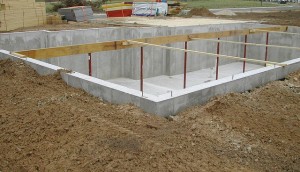
The subtitle here is not a snarky Nike-influenced oversimplification: “Just read it.” No. I am referring to the first step of the process in medieval monastic spiritual reading, the foundation of “lectio divina.”
Simply reading the Bible, opening at Genesis and pressing on to Revelation, is an excellent practice, of course, though a challenging one for many. But that is not my subject.
I started this series saying Guigo II (d. 1182) was the go-to guy on the topic of lectio divina.
In my second installment I noted that his approach was very different from today’s academic study Scripture, and very different as well from what is presented today as lectio divina — a free-form reaction to a superficial reading of the text. And it was not like casually reading through like a novel either.
So what is “reading” in lectio divina?
Here is a brief description of reading from early on in The Ladder of Monks.
Reading is the careful study of the Scriptures, concentrating all one’s powers on it.
That statement should be enough to convince you that lectio divina is something completely different from reading the text three times and brainstorming our reactions.
We are to bring our full minds to reading the text. Is Guigo saying we should practice historical-critical exegesis?
Some serious study of that kind is helpful, but note two things:
First, study is the starting point, not the end.
Second, the goal of study is new life in Christ.
Listen to what he says we should study to find:
Reading seeks for the sweetness of a blessed life…. Reading, as it were, puts food whole into the mouth….
This is a very different goal from the historical-critical method. Guigo is not studying to figure out what Mark was trying to get across to one particular early Christian community. And he is not studying to figure out who wrote which fragment of Genesis or Isaiah before someone else compiled it into the book we know.
Guigo studies the Bible to find “the sweetness of a blessed life.” He sees the text of Scripture as “food.” Guigo studies to find what is rich and nourishing for a flourishing life in Christ.
Near the end of the book he re-emphasizes that this is just the start of a bigger process.
Reading comes first, and is, as it were, the foundation; it provides the subject matter we must use for meditation….
The crucial thing with a foundation, of course, is to build something on it. You need the foundation to be strong — but it is useless if you leave it empty. As he puts it
Reading without meditation is sterile…
Guigo is clear throughout that the four rungs are interconnected. Climb up onto the first rung by reading and your hand automatically reaches upward to the second: meditation. Once the foundation is laid, construction begins.
————
Click here to go to part 4 of this series!
Click here to start at part 1…
————
I would love to hear from you in the comments:
What might help your reading of Scripture bring out something more like “the sweetness of a blessed life” and “food”?

Gary, I’m glad I found “Kneeling with Giants” and through that, this. I always enjoy your posts. Rhis one is no exception. Blessings to you.
Thank you Fred. It means a lot to me.
(Let me know some time how your group went.)